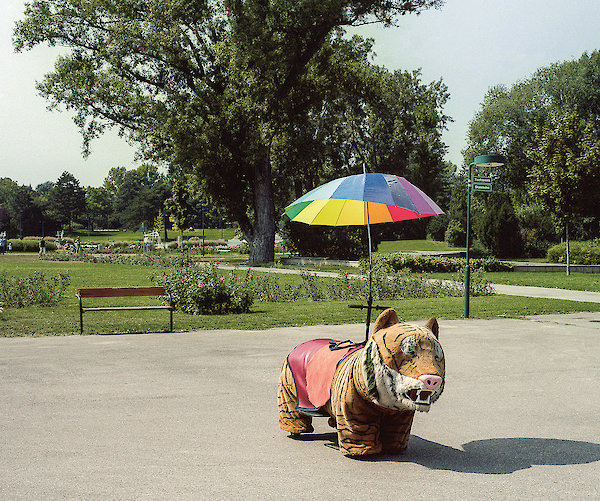Program
x—LArch 2018, Park Politics – International Conference
Urban landscapes are political spaces that mirror the dynamic histories of planning approaches, design attitudes and through these–worldviews. Administrative and economic prerequisites change as well as concepts for public good and use. How have public spaces been designed and who determines the conditions today–in an era of post-politics?
In the international conference x—LArch 2018 Park Politics the ILA Institute of Landscape Architecture wants to engage with and unpack the political frameworks underlying the design and programme of public open spaces, taking parks as an example for urban open spaces. This conference enhances theoretical, methodological and empirical exchange from a multidisciplinary perspective.
Every designed space reflects the period of political, technological and social conditions within which it was conceived while simultaneously reflecting later societal transformations. The changes reveal an ongoing and dynamic process of professional questioning and criticism, based as much on experiences of success and failure as on the ebb and flow of ideas and ideals.
These reflections and ideals that influence our conceptions of urban landscapes are never neutral, but are determinate by relations, practices and interactions embedded in structures of power positions, social orders and hierarchy. The processes of shaping, managing, and using urban open space thus must be understood to have a direct relationship with the political, economic and cultural conditions of cities. Doreen Massey (2005) has argued that space “poses the political question of how we are going to live together”. Ideas and concepts of how society would work best are not only the content of political manifestos, but are also–if more subtly–expressed in specific aesthetic approaches shaping our environment as constitutive models, policies or principles. Although these models are often framed as technological necessities or neutral aesthetic developments, ex post investigations have enabled the identification of their ideological backgrounds their effects on the design and programme and the actual appearance of urban open spaces.
In an era of post-politics, unpacking and surfacing and engaging with the political frameworks underlying the design and programme of contemporary urban open spaces contributes to discourses on the–obvious and not so overt–negotiation processes between diverse actors who shape our collective environment. We take issue with the a-political understanding of planning and design, linked either to technical and objective expertise or to artistic licence. As such, we see urban open spaces to be not the domain of planning and design professionals only, but both a medium and outcome of an amalgam of influences, be they economic, cultural, social or political. Therefore, we recognise the investigation of the built environment and why it looks as it does as an intrinsically multi-disciplinary undertaking. We argue that this discourse must take place among and between the diverse players engaged in the politics of urban landscapes, to include designers, planners, politicians, and community advocates.
This conference presents theoretical, methodological and empirical insights from various disciplines. Contributors explore the spatial, social, cultural and political causes, dimensions, implications and consequences of design.
Public afternoon lectures at the Az W, Austrian museum of architecture open up the field from different professional and scholarly perspectives of graphic design, urban geography, landscape architecture and art. At the University of Natural Resources and Life Sciences BOKU Vienna scholarly sessions are grouped along the topics of management, use and design and mirrored in reports by renowned practitioners. Field trips offer explanations of actual examples to further discourse and exchange.

